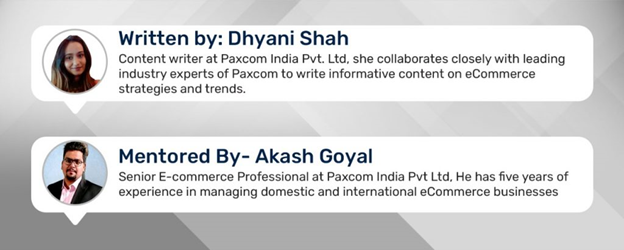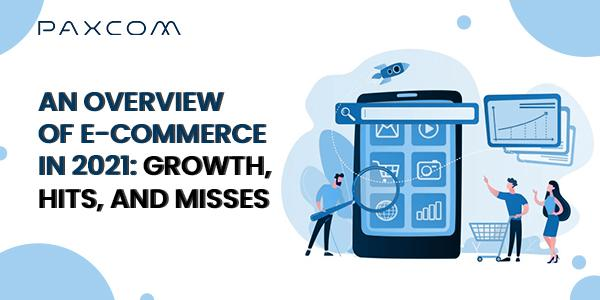This year, eCommerce has not just made a significant impact, it has also become an inseparable part of our lives. Ecommerce is no longer limited to online shopping alone, but a trend that has infiltrated into all spheres of life. From fashion to food to furniture, eCommerce is the new way of shopping and buying products.
When we talk about the growth of eCommerce, it is impossible not to mention the ‘COVID Pandemic.’ Due to numerous restrictions and lockdowns around the world, it became necessary for local retailers/ big brands to open online stores or get listed on pre-existing eCommerce platforms.
To understand the dominance of eCommerce, we have to talk numbers, right? About two years ago, only 13.6% of sales occurred online. Today, that number is approaching to 19.5%, a 45.8% increase in eCommerce market share over two years. By 2024, growth is projected to increase by 21.8%, representing an uptick of 8.2% in just five years. (According to eMarketer)
Table of Contents
What were the consumers’ shopping habits?
Consumers have been comfortable shopping online and everything that comes with it. More than 62% of consumers shop online more than now, as per eMarkerter’s report. So, the online shopping trend is not going away, even if the world is going back to normal. People have started to appreciate the ease of door-step delivery.
Take a look at the number of consumers who shopped online more often in the year 2021–
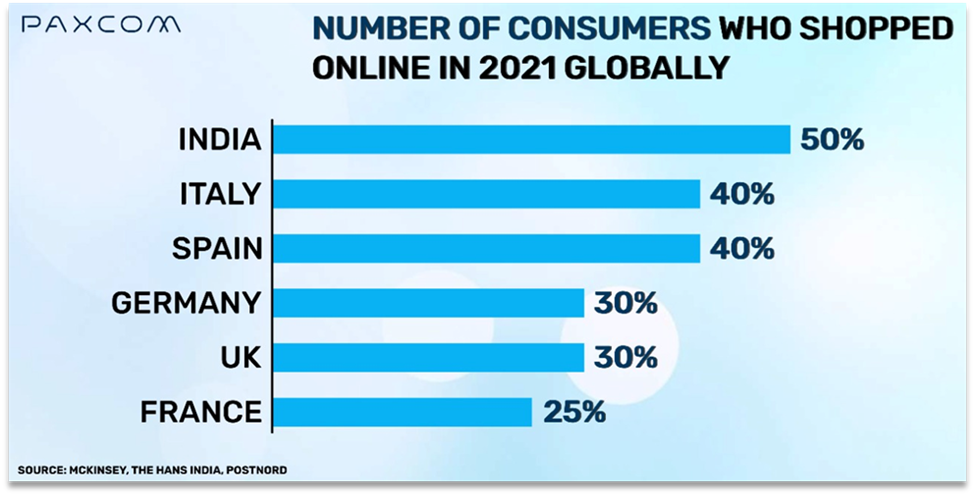
Growth of different eCommerce categories
(I) Demand for Online Grocery Shopping continued
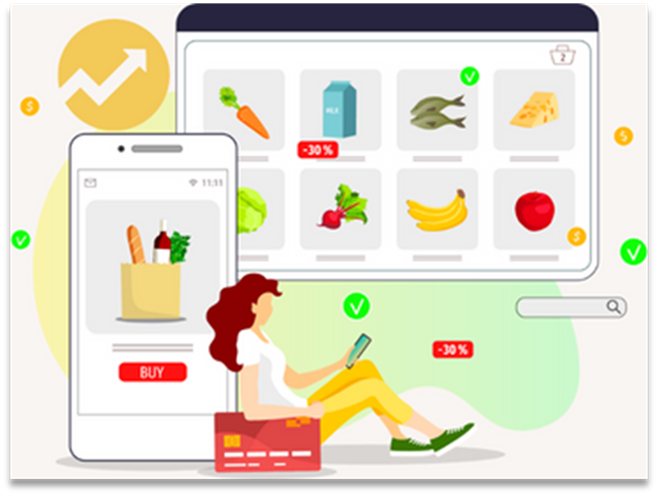
The COVID outbreak caused many consumers to move online or to pick up their purchases in-store, and this trend was seen to continue after the risk of infection had passed. One priority for retailers in 2021 was investing in improving their platforms and making order fulfillment more efficient. Retailers also moved toward dedicated spaces, such as in-store pick areas or dark stores (Grofers India opened 150 more dark stores because of the surge in demand) that are optimized for order picking efficiency.
Before the pandemic, only 7% of grocery shopping took place online, and today more than 20% shop online, according to Mastercard. They also expect that 70-80% of the grocery spikes will become permanent in the future.
(ii) The unprecedented rise of e-Pharmacy
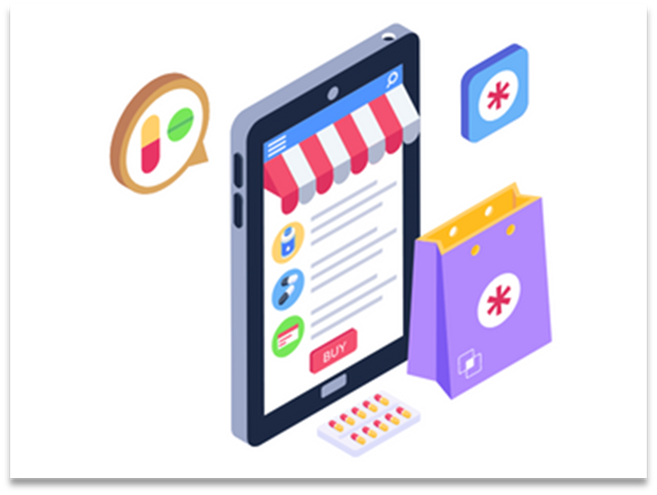
The online pharmacy sector is experiencing healthy growth over the course, and as per the report by EY, India’s ePharmacy market is now a step ahead of its nascent stage and is growing and expected to rise to $18.1 billion in 2023.
Contributing factor to the growth of ePharmacy in 2021 is the increasing prevalence of chronic illnesses, along with the growth of e-pharmacy services to simplify and facilitate the delivery of medicines, healthcare products, medical devices, etc. Market segments include North America, Asia Pacific, Europe, Latin America, the Middle East, and Africa, with North America dominating the global market at the moment.
On a regional level, the market has been classified into North America, Asia Pacific, Europe, Latin America, and the Middle East and Africa, where North America currently dominates the global market.
(iii) Growth of Online Fashion Industry
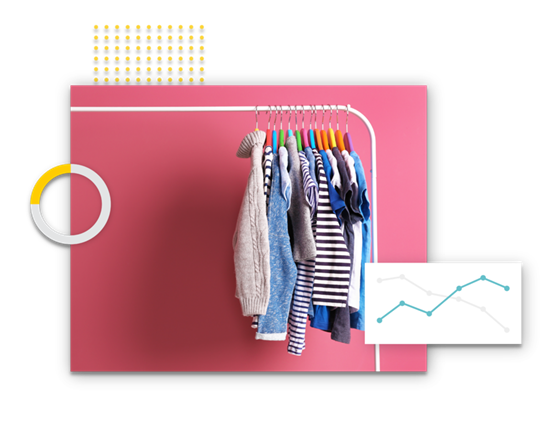
According to Statista, the online fashion industry saw a 51% increase in order volume and a 45% increase in revenue over the previous fiscal year.
The fashion industry has been at the forefront of reinventing, re-strategizing, and re-aligning itself with rapidly shifting business environments and consumer tastes. Furthermore, the industry has seen multiple retailers establish their e-commerce niches. With fashion brands adopting direct-to-consumer (D2C), they are building stronger relationships with their consumers, resulting in higher growth.
The online apparel market in the United States will be worth $99.1 billion in 2021, as per Statista. A lower barrier to entry for digital clothing retailers makes it easier for them to market, sell, and fulfill orders globally and automatically. Therefore, worldwide revenue and revenue per user (ARPU) are both expected to increase. In Europe alone, consumers likely spend $921 on fashion-related items in a year.
We saw some Category growth in 2021 and the prediction for 2022, but what were the trends that contributed towards this growth? You must be curious, right! Wait no more, let’s jump to it then-
Top eCommerce trends that ruled 2021
1. AI and Machine learning for eCommerce
2021 was full of technological advancements, and we observed many brands and eCommerce sites using AI solutions to significantly automate the workload to lift conversions.
We could see the trend of autocomplete; when a user starts searching for a product, AI instantly suggests the fastest route to the intended product by making the most relevant product suggestions and categories.
a. Voice assistant for shopping and its co-relation with Mobile
In the past few years, mobile phones have become ubiquitous. There are two billion smartphone users worldwide, and many of them use their phones to shop online. With so much attention going to mobile devices and eCommerce websites, brands have started optimizing them for mobile. This helps them with an increase in their overall conversion rate but also in driving traffic to websites from search engines and social media.
According to Gartner’s research, 100 million consumers shop using AR, so it will be interesting to see how that shakes out next year.
Let’s take Amazon, for example, how they are expanding their customer base in every region by seeking vernacular offerings, and now Alexa enabled on almost all regions in their platform. It was observed that 72% of people who own voice-enabled speakers use them regularly. (Think with Google).
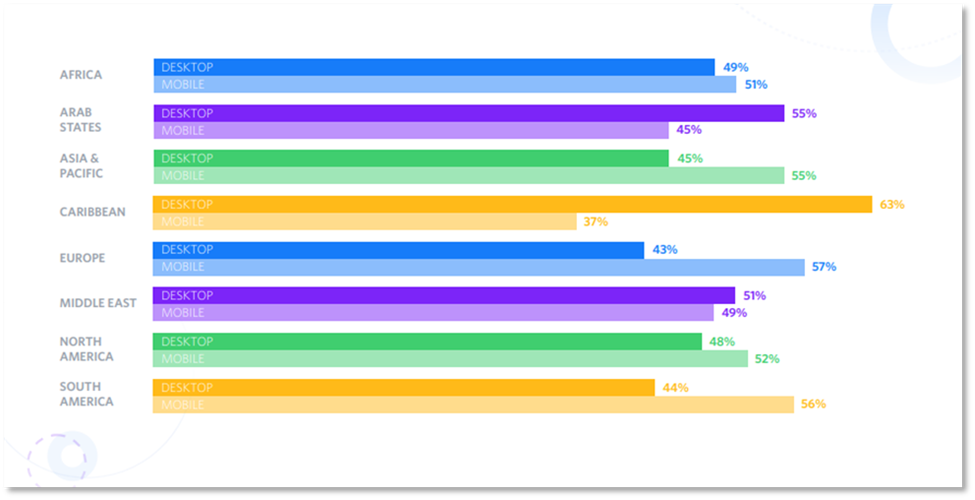
(b) Initiation of AR in 2021

The advent of augmented reality (AR) has revolutionized eCommerce. With this technology, shoppers can really see the item they’re shopping for, which helps them decide what to buy. In specific industries, such as fashion and home decor, AR has transformed the shopping experience, as customers can experience the item without actually seeing it.
Many e-commerce companies and brands like Flipkart, Ikea, Walmart, Burberry, Gucci, and many more are already leveraging this trend. If virtually trying on products was an option with their favorite eCommerce store, 35% of people would shop online more and 22% would visit brick-and-mortar stores less.
(c) Personalization

(Source: Mail up)
Nine out of ten respondents (91%) said they shop with a brand that recognizes, remembers, and provides relevant offers and recommendations. Implementing personalized experiences on-site or in marketing campaigns has been shown to boost revenue, with one study finding that retailers scaling advanced personalization capabilities saw a 25% lift in revenue.
BCG estimates that retailers, the eCommerce brands who could “build basic personalization capabilities,” achieved a 10% or greater revenue lift; these retailers represented 40% of participating companies. We can infer that before the pandemic, consumers wanted personalization, and now they demand it.
2. Integration of Social Commerce
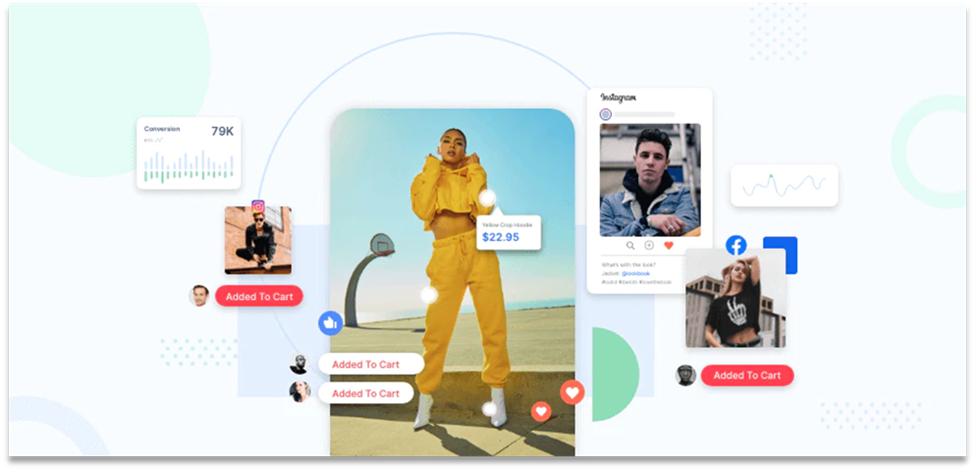
With this year’s start, the usage of social media rose dramatically, so much so that with certain advancements, it changed the approach to digitization. 60% of Gen Z use Instagram to discover new brands, while 48% of them make a purchase through social media (Statista).
It is indeed a generation of “you see it, click it, buy it.” Social commerce sales should account for 4.3% of all retail eCommerce sales in the US by this year’s end. Today, the category that remains the largest for social commerce is fashion and apparel, followed by electronics and home decor.
3. Video trends in eCommerce
Content marketing has changed a lot in recent years, and video content is now more important than ever. This year, 86% of businesses used video as a marketing tool, according to an eMarketer survey.
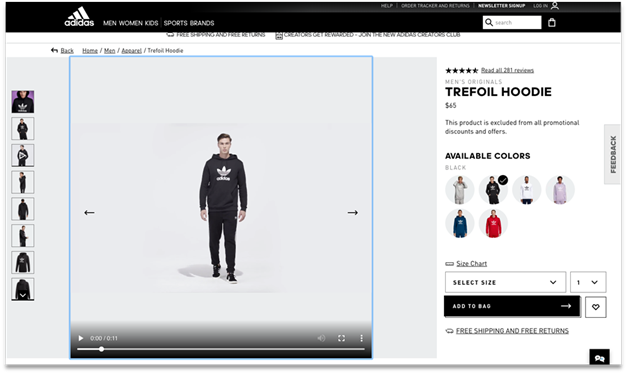
Over 96% of people have watched a brand’s video explaining a product they are interested in, and 84% were convinced to make a purchase because of the video. (Wyzowl research)
The types of videos that gained popularity are: product close-up videos, overviews, customer testimonials, and unboxing. The use of these is only set to increase, since they are considered a great source of engagement, going beyond just text and a photo.
4. Omnichannel retail is set to become the new normal
The omnichannel market is already snowballing now and will do so for many years to come. A retail omnipresence is now a must-have in the new normal, as retailers begin to adapt to the new reality. According to Market Research Future experts, the market will grow by 21.48% between 2017 and 2023, which equals a growth of $11.01 billion.
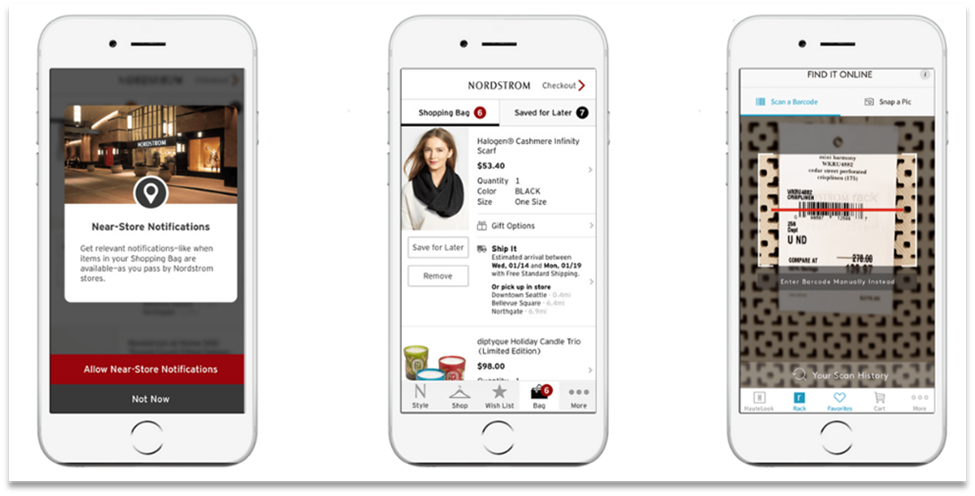
This further stat might give you a chuckle, but eMarketer surveyed that 45% of product searches were conducted from bed, 35% from the office, and 25% from the washroom. And we all know that they would be searching through the various devices. So many brands, like Country Delight, Zeimums, and Dick’s Sporting Goods, offer omnichannel service.
For instance, Zumiez’s customers can now reserve/buy online and pick them up in-store the same day, ship from any Zumiez store to anywhere, and order online. As you can see, stores are an essential part of Zumiez’s omnichannel experience.
5. Subscription services that induced customer retention
The subscription commerce industry is growing at an exponential rate. 15% of online buyers sign up for one or more subscription services, according to research conducted by McKinsey & Company. Considering that there are already 2.14 billion online shoppers in 2021, that’s a big number.
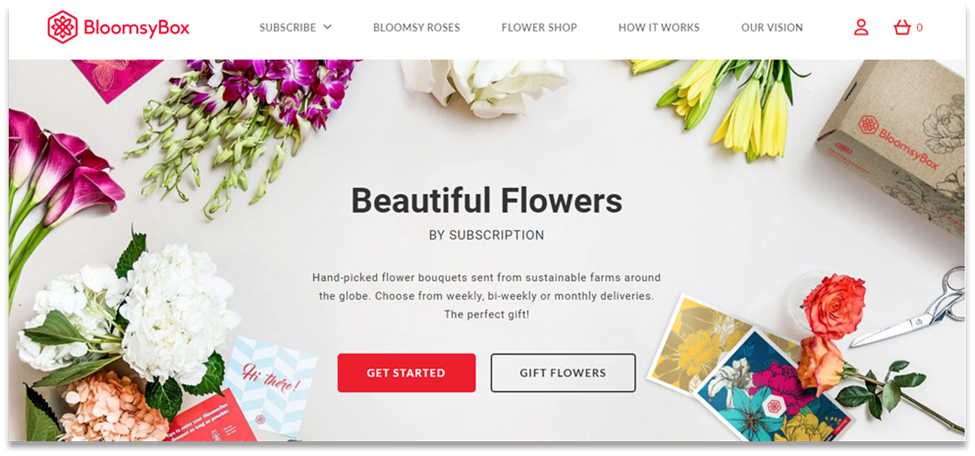
While Amazon offers its customers subscribe and save services, Farmhouse Delivery is a Texas-based company that delivers fresh, local, and organic meat and groceries right to their door. Customers can choose from freshly cooked meal kits, produce boxes, and more. Meals and products can be subscribed to.
6. eCommerce goes Green
Today’s consumers are more aware and concerned about what they are buying, and there is more talk about sustainability and the environment than ever. It is true that what goes around comes around. The customer now wants to avoid fast fashion and would rather pay for a product that is not harmful to the environment.
Lociwear, an American brand, and Chupps, an Indian brand, have already introduced sustainable footwear made from natural rubber and bamboo eyelets. In addition, many brands are turning their attention to becoming sustainable brands.
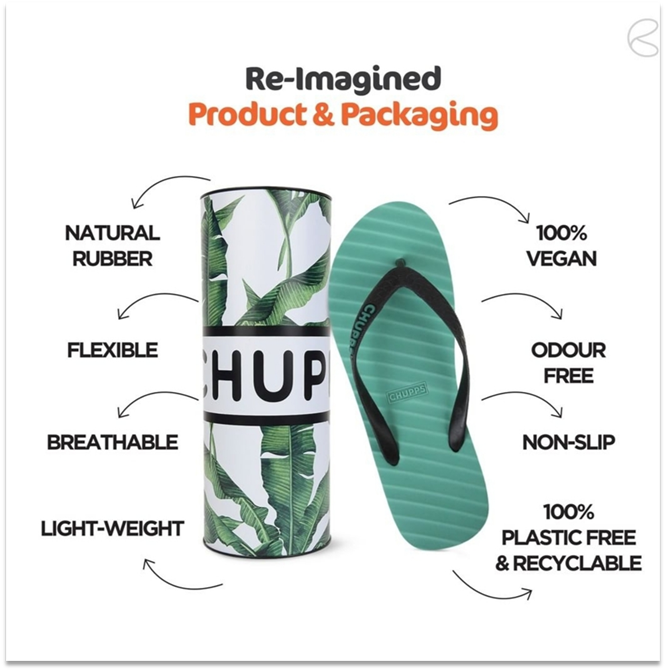
The supply chain is also a big part of an e-commerce company’s carbon footprint. There is the potential for significant reductions here, and many brands have already begun:
- Shipment improvements. Ship as many items together as possible in smaller packages.
- Changing packaging. Usage of recycled and recyclable materials as much as possible while steering clear of styrofoam.
- Partnering with a green delivery company More and more logistics companies offer environmentally friendly delivery services. Some even operate electric vehicles.
- Optimizing return strategy- Emphasizing in-store returns; replacing items without forcing customers to return the original product; re-using or refurbishing returned goods.
What were the eCommerce Challenges in 2021?
1. Increased competition
2020 may have paved the way for brands and sellers to turn their offline presence into eCommerce. But the market has gotten so saturated that one can find many sellers selling products in the same niche.
2. Maintaining inventory and fulfilling orders timely
In order to run an e-commerce business successfully, shipping and fulfillment strategies are essential. Ultimately, the experience does not end with the checkout process. Shoppers often remember a terrible delivery experience more than a positive one. (the most common human tendency)
In fact, 87% of consumers state that their experience with shipping and delivery directly influences whether they will shop with the brand again in the future. Furthermore, 63% of respondents said shipping should be fast, and 66% said it should be free, as per ShipBob.
Due to the upsurge in demand and having a presence on each channel gets challenging to maintain the track of inventory, and like said with many brands selling identical products, Customers would be more than likely to switch to other brand if they see your product out of stock.
3. Challenge to select the right tools
When you make a concerted effort to select and invest in the right tools for the job, you may be able to accomplish more (and achieve better results). E-commerce remains a complex industry, despite its simplicity.
Tracking brand performance manually for your target audience wastes time you could use for more creative pursuits. A solid software solution is essential.
In the vast array of options available today, choosing the right tool is a challenge. If your tool is weak, you will be left behind by sellers with better tools. Even if you can easily switch to a different system, the time you spent on learning the old system can never be reclaimed.
4. Running PPC Ads
When running PPC ads for your brand, make sure you do detailed keyword research and then segregate them based on budget and objectives. A lot of brands start PPC ads based on a few keywords without understanding the nuances of match types (exact, phrase, broad), length of keywords (short tail, long tail), and type of keywords (category, competition).
When campaigns aren’t categorized by brand goals, analyzing them becomes problematic to have an accurate picture of which products yield positive or negative ROI, segregation is necessary.
It also helps you to understand which campaigns can be leveraged more in order for your brand to scale and grow.
Highlights of eCommerce 2021
- The eCommerce industry is growing, but COVID-19 continues to affect the eCommerce industry.
- Social commerce is expanding globally. Brands have already started to take advantage.
- The importance of video marketing for eCommerce cannot be overstated.
- The focus is on sustainability.
- The future is AI and personalization.
The digital ecosystem of e-commerce is constantly experiencing some shifts, thanks to the increasing empowerment of consumers. It’s now more important than ever to provide the right kind of experience that keeps your customers coming back for more. E-commerce is going to be more “human” and personalized. We will see more of a focus on the individual customer rather than segmenting them into groups and targeting them with standardized offers.
One thing is certain: it’s never too late to jump right in, learn something new, and decide whether it’s the right move for your company. Right now, consumers are in control, and eCommerce businesses are customizing the journey for them. And all the trends mentioned above will only increase in intensity and can guide you in creating your 2022 plans. Since 2022 is right around the corner, now is the time to re-evaluate, develop a new plan, and scale your business for better growth. Let us help you with it; connect with us at info@paxcom.net
